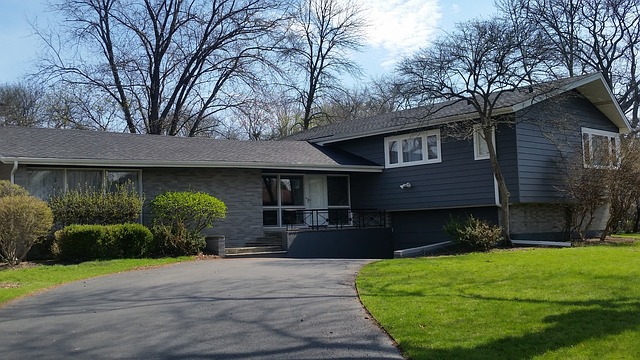Exterior Brick Staining- Should You Do It?
There are circumstances where owners of brick homes or buildings are interested to change their structure’s façade appearance.
For example; some people may not like the colour of the original bricks. Others may want to modernize the exterior appearance of their brick home. Businesses that have brick or block buildings may want to introduce colours reminiscent of their logos to the exterior of the building.
As a result, people will commonly paint their brickwork. To note is that painting bricks are not the best approach.
Bricks will absorb and shed moisture. Therefore, it is necessary to allow the bricks to “breath”. By painting over brickwork a few things will result. The paint can act to trap moisture beneath the paint surface, therefore contributing to premature brick erosion. Additionally; painting the bricks often results in the paint itself peeling or flaking off. It then becomes necessary to re-paint every five to ten years.
The better solution is to stain the bricks using a stain designed for the purpose. Another benefit is that stain can be tinted to closely replicate the original look of the bricks, which can provide a fresher and restored appearance to the brickwork.
Examples of brick structures that can benefit from staining are those that may have been sandblasted in past years (also not a recommended practice). Chemical cleaning is a preferred method if one desires to remove algae and pollution after decades.
The practice of sandblasting brick which was common in the 1970s and 80s resulted in the damage of the glazed surface of the bricks which is created in the manufacturing process. Such bricks become vulnerable to absorbing moisture from rain, which then accelerates the deterioration of the bricks themselves.
Applying the correct water-based brick stain; will saturate the bricks and will result in the ability to help repel water from soaking in through the surface. The key is to purchase the correct brick stain product and follow the manufacturer’s instructions.
Brick stains typically contain mineral elements in their composition and are water-based as opposed to oil-based as is common with wood stains.
Other examples include heritage masonry homes and buildings. High rise and low rise buildings with brick facings, commercial office fronts, and homes that have discontinued brick types. It is possible to completely change the colour of the brick or blockwork by using brick stains.
The key to a successful brick staining project involves proper preparation of the masonry surface.
The first step is to identify any areas of deteriorated brickwork and related mortar joints. Any individual shaled bricks need to be sawn out and replaced with the same type or closest matching bricks. Deficient mortar joints should be re-pointed. Mortar should be tinted to closely match the original or “weathered” mortar on the remainder of the wall surface. Such work is in the realm of what a mason will take care of.
Once all remedial brickwork has been completed, the next step involves power washing, or chemically cleaning the exterior brick wall surfaces. Allow such surfaces to dry out thoroughly.
The next step involves protecting any areas which may be vulnerable to overspray or which are not intended to receive the brick stain.
When undertaking the staining of the brickwork it is important to consider how one will access the wall surfaces to be completed. Most typically it will be necessary for scaffolding to be erected if the building is higher than one story.
Also necessary is to have the correct personal fall arrest equipment and training if undertaking such work, as a home or building owner. While the staining process is relatively simple; it is important to keep in mind issues of potential liability.
As an example; hiring students or handy-persons who do not hold fall arrest and training certification, or even professional painters that may not have the credential; places the home or building owner at risk in the event someone falls or is injured. It is therefore also vital to ensure that whom-ever is contracted to complete any such work; is able to supply proof of liability insurance and WSIB coverage for all workers to be engaged on the site.
One further note of liability pertains to the airborne brick stain; which if being spray applied, may travel by wind to stain neighbouring properties. It is therefore important to choose the ideal weather for such work.
Where scaffolding may be involved to access such areas; enlist the services of a professional scaffolding contractor who has experience with requirements of erection of the correct scaffolding and hydro line coverage if applicable.
For commercial buildings which are located on main streets, with pedestrian walkways nearby; a permit may be required by the local authorities, before completing any of the work.
The brick stain may be applied using a shag roller or may be applied using a compressor and sprayer combination. Professional painters may use airless spray equipment.
It is important to apply an even and thorough coating of the brick stain. If using a coloured brick stain, it is important to do a sample area first to ensure that the colour is correct and to get the feel of the application.
If done well, an application of brick stain can last upward of twenty-five years. Over time, it can be a cost-effective solution when compared to other exterior siding or colour change alternatives. Colour options are virtually unlimited. To source brick stain, one should investigate suppliers that typically serve professional painters, or by sourcing a product manufacturer who may direct the person to qualified vendors specializing in such work.
To learn more about masonry repair and maintenance of all types, contact www.avenueroadmasonry.com or view our projects on Instagram™ and Facebook™.

